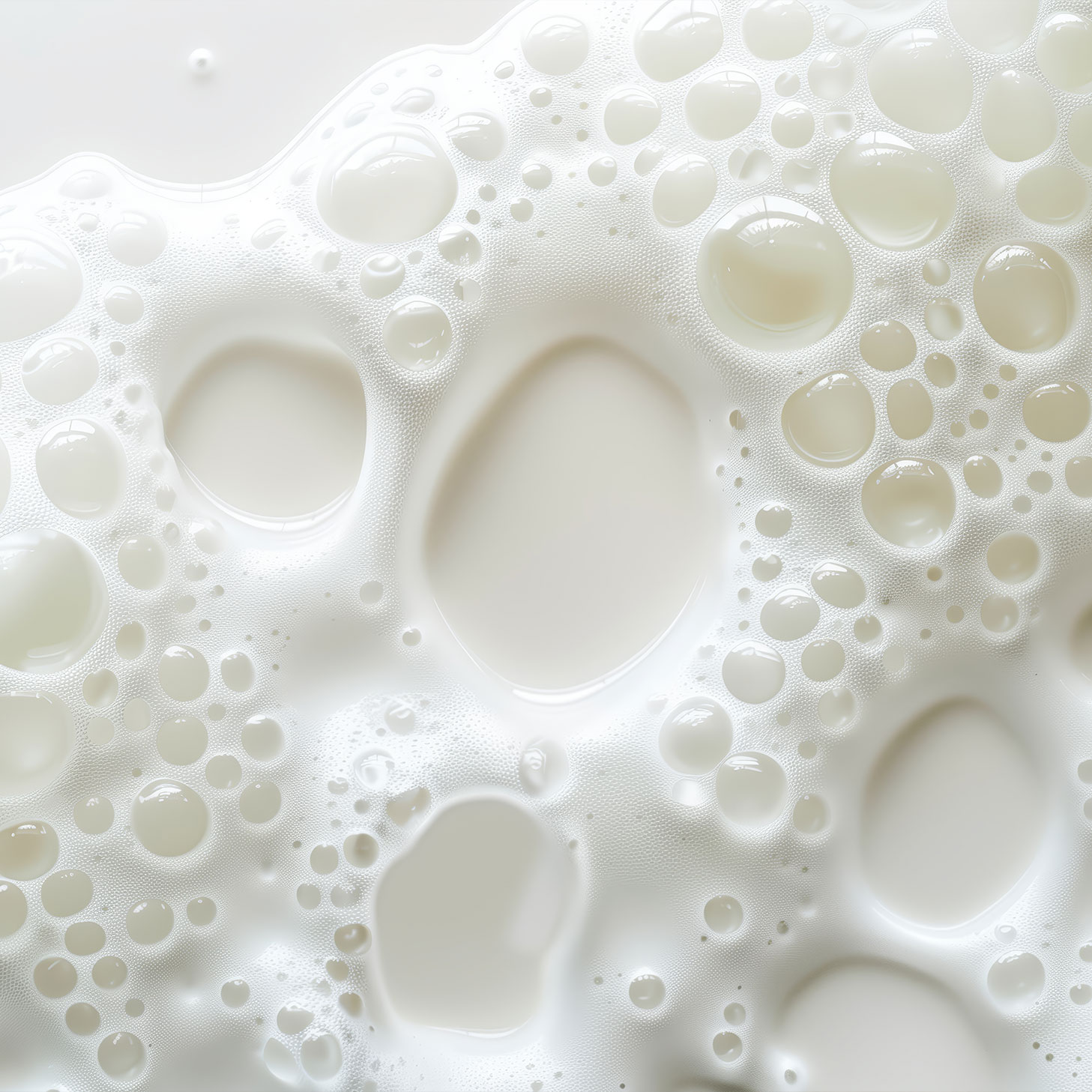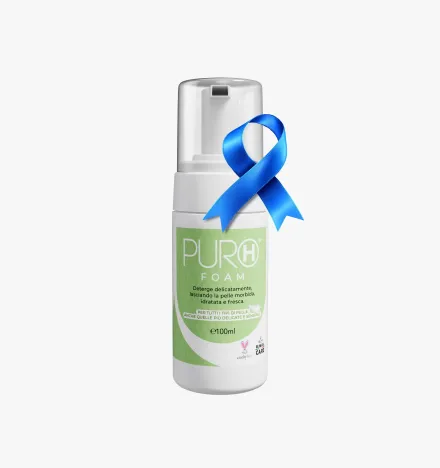Probiotics
A BALANCE THAT NOURISHES FROM WITHIN
Probiotics are microorganisms with extraordinary properties that help maintain a delicate balance starting in the gut, now more than ever a symbol of natural health and awareness.

NAME
Probiotics
WHERE IT IS USED
medicine, cosmetics
The Benefits of Probiotics
PROPERTIES AND BENEFITS
Defensive
They strengthen natural defenses, protecting the body from pathogens.
Dermatological
Reduce chronic skin problems and strengthen the epidermal barrier.

Metabolic
promote nutrient absorption and production of essential vitamins.

Probiotics and Prebiotics: what are the differences?
Although they are often confused or mentioned together, Probiotics and Prebiotics play distinct but complementary roles in supporting gut health. Probiotics are live microorganisms that directly benefit the body by helping to rebalance the gut microbiota.
Prebiotics, on the other hand, are natural substances found in some foods, such as plant fibers, that act as nutrients for beneficial bacteria.
In summary, Probiotics are the "inhabitants" of the intestinal flora, while Prebiotics represent their "food," which is essential to promote their growth and effectiveness.
Index
What are probiotics
Probiotics are live and active microorganisms capable of positively affecting the health of the body. Known as "friendly bacteria," they occur naturally in the human body, particularly in the gut, and can be taken through specific foods or supplements or topically through products such as creams and cleansers.
Their main function is to support the balance of gut flora, a complex ecosystem that plays a central role in overall well-being.
These beneficial microorganisms mainly include bacteria belonging to the genera Lactobacillus, Bifidobacterium and yeasts such as Saccharomyces. Each strain has unique characteristics and specific capabilities, which is why Probiotics are not all the same: their effect varies depending on the type and amount used. For example:
- certain species of Lactobacilli and Bifidobacteria are useful for improving digestion, relieving symptoms of IBS, and supporting the immune system;
- Saccharomyces can be used to counter intestinal disorders related to infections.
Probiotics also have applications beyond the digestive system. In fact, they can contribute to skin health, supporting the fight against issues such as acne and dermatitis. Because of their ability to improve the interaction between the body and the microbiota, Probiotics are an important ally in promoting health, combining tradition and scientific innovation.
History of Probiotics
The term "probiotic" comes from the Greek word "pro-bios," meaning "pro-life." The history of this microorganism has its roots in the early 20th century, when Elie Metchnikoff, a Nobel laureate, hypothesized that bacteria in fermented milk could promote health and slow aging by developing a diet based on the so-called Bulgarian Bacillus.
In 1917, Alfred Nissle isolated a nonpathogenic strain of Escherichia coli that was useful in counteracting intestinal disorders. At the same time, Henry Tissier identified Bifidobacteria and discovered their effectiveness in treating diarrhea in infants, claiming they could replace harmful bacteria.
The term "probiotic" was officially coined in 1965, while in 1989 Roy Fuller refined the definition, emphasizing the viability of microorganisms and their beneficial impact. Since then, Probiotics have been studied for their ability to support gut and general health, demonstrating broad therapeutic potential.
Properties
Probiotics provide multiple benefits, acting on different systems of the body. Their main function is to support the microbiota, rebalancing the bacterial flora and improving gut health. However, their impact also extends to the skin and general well-being.
The main properties of Probiotics include:
- Defensive: they strengthen the natural defenses, protecting the body from pathogens.
- Anti-dysbiosis: they rebalance the microbiota, counteracting imbalances that can cause inflammation or intestinal disorders.
- Metabolic: they promote the absorption of nutrients and the production of essential vitamins.
- Digestive: they improve gastrointestinal function, relieving disorders such as constipation or diarrhea.
- Dermatological: reduce chronic skin problems such as acne and dermatitis, strengthen the epidermal barrier, and promote a healthy, glowing appearance.
Uses
Probiotics, due to their versatility, offer benefits ranging from gut wellness to skin health, finding application both through internal use (via diet and supplements) and topical treatments.
For skin health, in fact, Probiotics are used in creams and solutions specifically for the skin microbiome. Topical application allows for:
- Rebalance the skin's bacterial flora, promoting the growth of beneficial microorganisms.
- Moisturize and repair the epidermal barrier, counteracting dryness and skin damage.
- Lower the pH of the skin, creating an unfavorable environment for harmful bacteria and limiting inflammation or irritation.
The extraordinary properties of Probiotics and Prebiotics are perfectly integrated in Puro H® Foam, the plant-based cleansing mousse that combines the benefits of these rebalancing microorganisms with natural ingredients such as Hypericum Flower Oleolite, known for its soothing and regenerating properties. Thanks to Probiotics and Prebiotics, Puro H® Foam promotes the maintenance of the skin's microbiota, helping to preserve the skin's natural balance.
Ideal for sensitive and delicate skin, Puro H® Foam removes impurities while respecting physiological pH, moisturizing and soothing any irritation. Perfect for those seeking a functional and gentle cleanser, it is a daily ally to protect and improve skin's well-being, offering effective cleansing without compromising its natural protective barrier.
Other uses
For the internal well-being of the body, Probiotics are commonly taken through fermented foods or supplements. These microorganisms help to:
- Restore the balance of the gut microbiota, especially following stress, antibiotic therapy, or unbalanced diets.
- Improve digestion by facilitating the absorption of essential nutrients.
- Strengthen the immune system, increasing resistance to infection and inflammation.
- Reduce the inflammatory state of the intestines, helping to prevent or relieve disorders such as irritable bowel.
This dual action, from within and from without, makes Probiotics a valuable tool for complete well-being, which starts in the gut and is reflected throughout the body, including the skin.
Contraindications
Probiotics are generally safe and well tolerated, but in some cases intolerance or allergy reactions may occur. These situations, while rare, may be related to specific components in the products, such as additives or residues, which could trigger an unwanted response in those who are particularly sensitive.
For this reason, it is important to pay attention to ingredients, especially for those with known allergies or intolerances. Always read labels carefully, and if in doubt, it is a good idea to consult a specialist for personalized advice.
Products with Probiotics
Probiotics are one of the main components of the PURO H® line, designed for cleansing and moisturizing the face and body.
Subscribe to our newsletter and get 10% off!
Stay up to date with the latest news, promotions, and exclusive offers from RI.MOS. CARE.

Do you have a question?
Our team of experts has an answer for you!
What is the difference between tissue regeneration and repair?
In case of injury, the physiological reflex of the organism and thus of the tissues is to evolve toward a regenerative and/or reparative process.
The difference between these two mechanisms is:
- Regeneration:
damaged tissues are replaced with cells of the same type. - Repair:
damaged tissues are replaced with connective tissue (fibrosis).
Why is the use of topical steroidal anti-inflammatory drugs (cortisone ointments) not recommended to treat an injury?
Steroidal anti-inflammatory drugs cause the scarring process to stop, torpid sores, promoting the development of bacterial and fungal infections.
Why is the use of disinfectants not recommended to treat an injury?
Disinfectants (based on iodine, chlorine, oxygen peroxide, etc.) are known to be histolesive. Used to ward off infection risks, they themselves become detrimental to tissue repair, being very potent inhibitors of cell proliferation, both of fibroblasts and keratinocytes.
The use of disinfectants, depending on the stage of the injury, causes these effects:
- re-initiation of the inflammatory process;
- pathological prolongation of the inflammatory phase;
- failure to progress to the granulation stage;
- stopping the granulation phase;
- inhibition of re-epithelialization;
- scar fibrotization (poor quality scarring).
What are the stages of wound healing?
There are three stages of wound healing:
- Stage 1: exudative or inflammatory or also called cleansing stage
- Stage 2: granulation or proliferative phase (granulation tissue formation)
- Stage 3: epithelialization or regenerative phase (scar formation and epithelialization)
What does "primary dressing" mean?
A primary dressing is one that is placed in direct contact with the injured tissues and interacts with the physiological processes of the injury.
What does "secondary dressing" mean?
A secondary dressing does not interact with the wound, but serves to:
- fill a cavity to absorb excess exudate and maintain the primary dressing over the wound;
- cover a wound to protect it while absorbing excess exudate and maintaining the primary dressing on the wound;
- Fix other secondary dressings and/or the primary dressing on the site of the injury.


